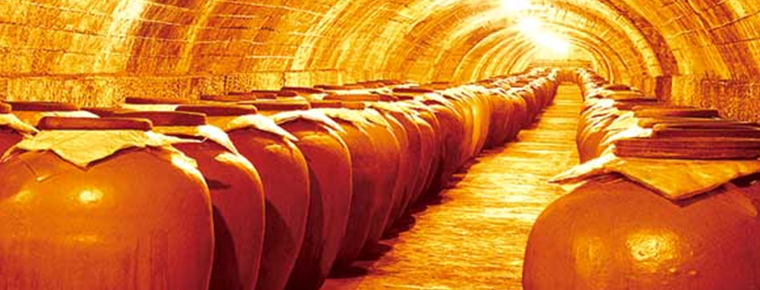Oyster omelet
Oyster fry is a common home dish, which originated in Quanzhou, Fujian Province, and is one of the classic traditional snacks in southern Fujian, Taiwan, Chaoshan and other regions.
There is an interesting story about its origin. Folk rumors have it that in 1661, the Dutch army occupied Tainan, and Zheng Chenggong, a Nan'an man from Quanzhou, led his troops from Luermen, intended to recover the lost land. Zheng Jun defeated the Dutch army like a broken bamboo. In a rage, the Dutch army hid all the rice and grain. Zheng Jun was wise when he was in a hurry for food shortage, and took local materials to make Taiwan's special products such as oysters and larvae. Sweet potato flour mixed with water and fried into cakes, unexpectedly spread to future generations, has become a popular snack in the province.
In September 2018, he was elected the ten famous classic dish in Fujian.
Oyster fry is not a unique snack in Taiwan . It has existed since ancient times in southern Fujian language family areas (southern Fujian, Chaoshan). It is said that Oyster fry is a kind of creative cuisine invented in a poor society. It is also an alternative food invented by the ancestors who are suffering and unable to eat enough. It is a symbol of poor life. Southern Fujian, Taiwan, Fuzhou and Chaoshan are basically the same origin. In Taiwan, its earliest name is "Jianfu Chaozhou". It is a traditional snack known to the older generation in Anping area of Tainan. It is a cake made by wrapping oysters, eggs, onions and coriander with water-added sweet potato pulp.
The other is that with the immigration of Zheng Chenggong and Fujian, Chaoshan immigrants brought Taiwanese oyster fry into the mainland of Taiwan. It has become a favorite dish for people across the Straits. Nowadays, Taiwan's oyster sauce is highly consistent with the production technology of oyster sauce in Fujian, especially in Quanzhou.
The Tsai Tsai is a Minnan dialect, referring to oysters (or oysters). Fujian, Southern Fujian, Taiwan and Chaoshan often make homemade snacks.
Its name is oysters, valves, gills, isocolumns, oysters, and oysters, which are edible shellfish. Most of the shells are triangular, and the thickness varies from species to species, distributed in the tropics and temperate zones. Oyster has rich nutritional value and is likened to "deep sea milk".
Guangdong called oyster as "Oyster", but in Southern Fujian Chaoshan and Taiwan called "Chai Zi". There is a popular saying in South Fujian called "fat leek".
"Food" means that in February of the lunar calendar, when leek grows most vigorously, it is also the most fruitful season for oysters. It is a wonderful golden combination of both. Cut the leek into knots, put them together with the washed oysters, add the diluted sweet potato powder as the adhesive, and fry in the oil pan until golden. Although Chaoshan people write "oyster branding", they read "Halok", which is consistent with the pronunciation of "Hao" in Minnan dialect of grasshopper. This shows the origin of the two.
In Southern Fujian, Golden Triangle is one of the most important dishes to test women's cooking skills. Although the recipe is very simple, it is still difficult to do it very well. Different people have different tastes in frying and frying. When the bride enters the house, the first homemade dish for her in law is best. Well done, it will make the parents look different. This home-cooked dish is the preferred dish for every household when they are "at the table" (other dishes include stir-fried "Southern Fujian stir-fried", "Anxi Hutou rice noodles" and so on).
Although oyster fry can be eaten everywhere, many people still keep the idea of eating oyster fry. They have to go to the origin of oyster fry, such as Anping in Tainan, Dongshi in Jiayi or Pingdong Port, which are rich in oyster fry. The oyster fry in Lugang, known as Xiaoquanzhou, is also very famous. To make delicious oyster frying, the most important condition is to use fresh oyster frying. These fresh oyster frying is now peeled and sold in the place of origin. They do not need to be immersed in water because of long-distance transportation. Therefore, each oyster frying is very fat and delicious. Of course, it is rich and juicy. Nevertheless, people who do not live in the origin should not be disappointed, because modern transportation technology is developed, so even far away in Taipei, you can eat sweet oysters freshly transported every day.
In southern Fujian, Quanzhou Lipu Village (Xunpu) is famous for its rich oysters. People from nearby counties and cities such as Jinjiang, Nanan, Shishi and Anxi all drive here to buy fresh oysters brought back by fishing boats just returning from the sea. Because there are plenty of oysters, the dwellings here make use of the inexhaustible oyster shell on the beach to cover the oyster shell with the characteristics of southern Fujian.
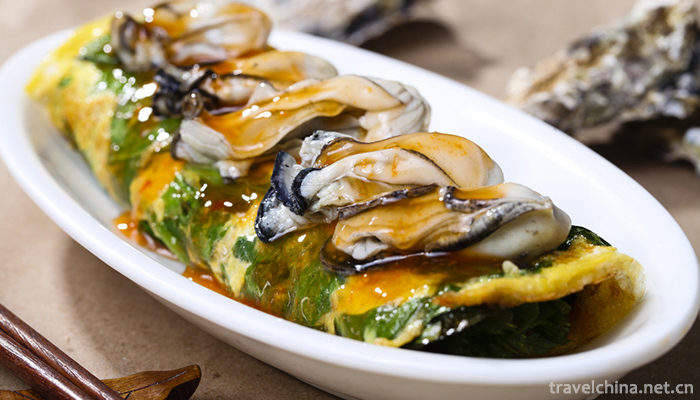
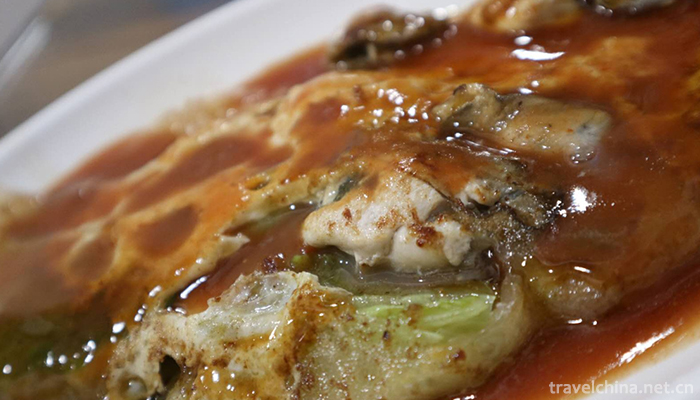
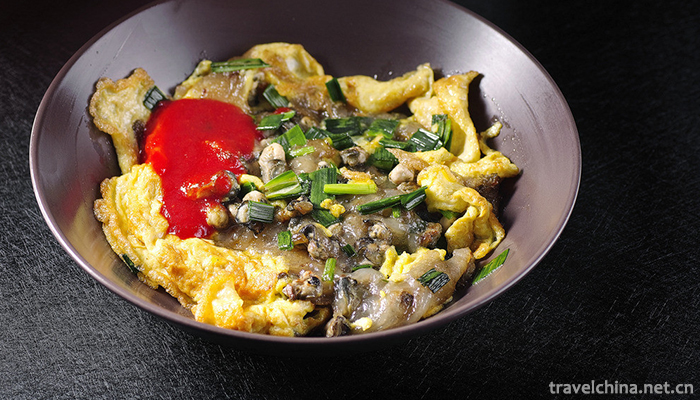
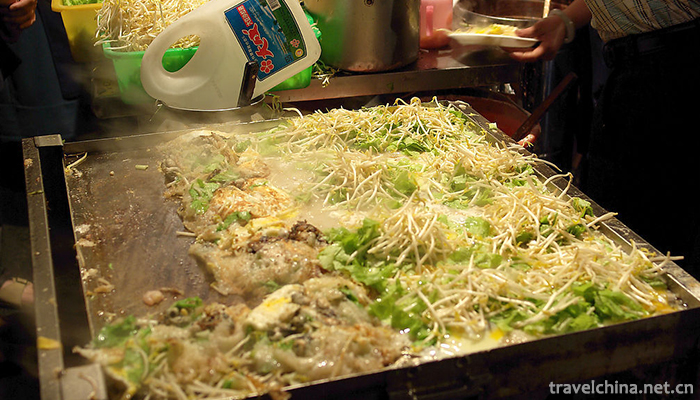
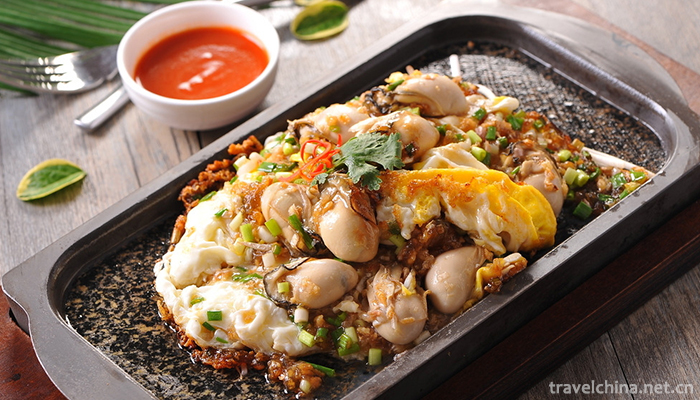
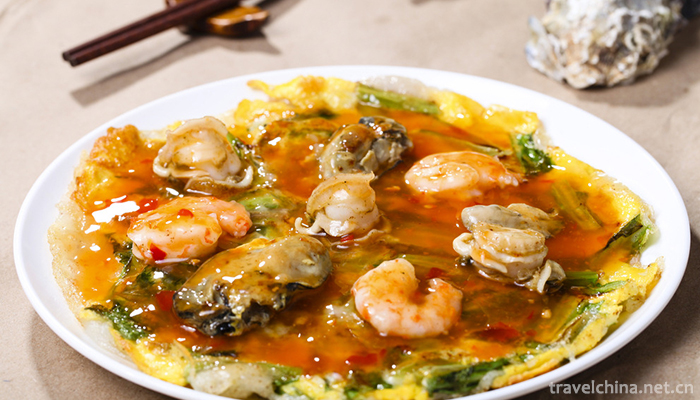
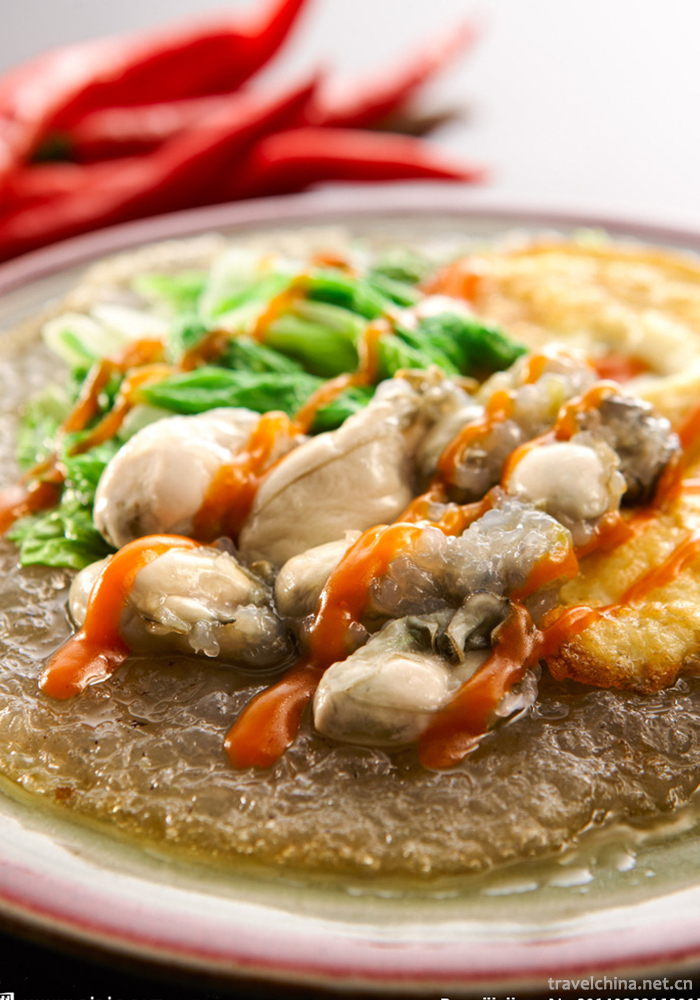
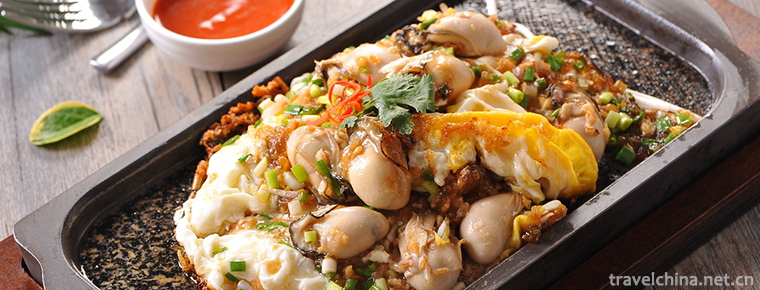
Oyster omelet
-
Martial Art
Wushu is a technology inherited from ancient military wars. Martial arts can strengthen the body and defend the enemy
Views: 294 Time 2018-11-13 -
Qu Fuming Gucheng
Qufuming Old Town: World Cultural Heritage, one of the three holy cities in the world, national AAAAA tourist attractions, National Scenic spots, national key cultural relics protection units, one of
Views: 196 Time 2018-12-08 -
The Gu Guan Great Wall
Guguan Great Wall is located in Xinguancun, Pingding County, Shanxi Province, on the western side of Taihang. It starts at Niangziguan Jiayugou in the north and reaches Baihui Village in the south.
Views: 143 Time 2019-01-12 -
Hukou Waterfall
Hukou Waterfall is a national scenic spot and a national AAAA scenic spot. Hukou Township, Yichuan County, Yan'an City, Shaanxi Province in the west, and Hukou Town, Jixian County,
Views: 172 Time 2019-01-16 -
Fangte Fantasy Kingdom Scenic Spot in Qingdao City
Fangte Fantasy Kingdom of Qingdao is located in Lannan Road, Hongdao Street, Hongdao Hi-tech Zone, Qingdao City, Shandong Province. It is the core high-tech cultural amusement
Views: 211 Time 2019-02-07 -
Drawing Shantou Drawing
Drawing is a kind of embroidery, also known as "lace". Legend has it that yarn drawing originated in Italy, France and Portugal, and was developed on the basis of folk embroidery in the Midd
Views: 169 Time 2019-04-18 -
Brewing Techniques of Luzhou Laojiao Liquor
Luzhou Laojiao Liquor Brewing Technology, Luzhou City, Sichuan Province, the local traditional handicraft, one of the national intangible cultural heritage.
Views: 178 Time 2019-05-15 -
Miao Flower Jumping Festival
Flower Dancing Festival is a traditional festival of the Miao people in Anshun. Legend has it that Yang Lu, a hero of the Miao people, rose up. Till now, Huashan, outside the North Gate of Anshun, is
Views: 247 Time 2019-06-05 -
Chengdu University of Information Technology
Chengdu University of Information Engineering is a provincial general undergraduate college jointly established by Sichuan Province and China Meteorological Bureau and the key development of Sichuan P
Views: 267 Time 2019-08-31 -
Neijiangs location
Neijiang City is located in the southeast of Sichuan Basin and the middle of the lower reaches of Tuojiang River. Chongqing in the East, Chengdu in the west, Zigong, Yibin and Luzhou in the south, Ziyang and Suining in the north. Its geographical location
Views: 361 Time 2020-12-16 -
Mineral resources in Leshan
Leshan City is rich in mineral resources, 34 kinds of mineral resources have been proved, especially non-metallic minerals, with great development potential. Among them, the total amount of proven rock salt resources is 10.5 billion tons, with an annual
Views: 167 Time 2020-12-17 -
Nanchong ecological environment
In 2019, the total amount of funds used for environmental protection capacity building and supervision and operation of Nanchong City is 14.1809 million yuan, including 2.4476 million yuan for monitoring capacity construction and 11.7333 million yuan for environmental
Views: 324 Time 2020-12-17






